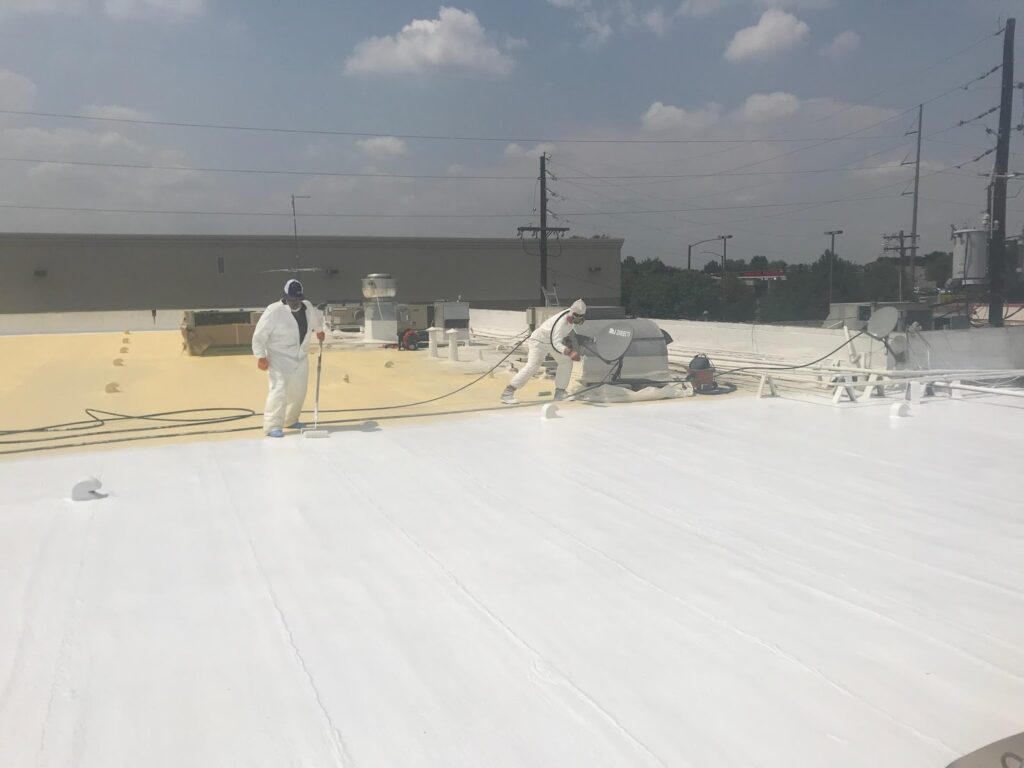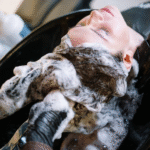As a commercial roofing contractor who’s inspected countless roofs across Denver—from industrial parks in Commerce City to office towers in the Tech Center—I’ve seen the difference a proactive approach can make. Your commercial roof is one of your property’s biggest investments, and in Colorado’s punishing climate, it’s under constant attack from hail, snow, and intense UV rays. I’ve worked with business owners and facility managers who learned the hard way that skipping routine commercial roof inspections can lead to six-figure repair bills or premature replacements. But it doesn’t have to be that way. By prioritizing regular inspections, you can catch issues early, slash maintenance costs, and boost your property’s return on investment (ROI). Let me share my insights on how a solid roof maintenance schedule delivers long-term savings and protects your Denver business, drawing on years of experience keeping commercial roofs in top shape.
The High Cost of Neglecting Your Roof
Your roof is your building’s first line of defense, but it’s not invincible. Denver’s weather—hailstorms in May, snow in November, and relentless sun year-round—can quietly erode even the best commercial roofing systems. I’ve climbed onto roofs after storms and found hidden damage, like punctured membranes or loose flashing, that owners didn’t notice from the ground. Left unchecked, these issues turn into leaks, water damage, or even structural problems, costing tens of thousands to fix. A single leak in a retail center I inspected in Lakewood led to $15,000 in interior repairs because it went undetected for months.
Routine commercial roof inspections are your insurance against these costly surprises. By catching problems early, you can address them with minor repairs—often under $2,000—instead of emergency fixes or full replacements. For property managers looking to protect their budgets, it’s worth taking time to read insights on commercial roof assessments to understand how inspections prevent these expenses.
How Often Should You Inspect Your Commercial Roof?
The question I get most from clients is, “How often do I really need to inspect my roof?” The answer depends on your building, its roofing system, and Denver’s weather, but here’s a practical guideline based on my experience:
Twice-Yearly Inspections
Seasonal inspections are the backbone of proactive roof maintenance. I recommend scheduling them in spring and fall:
- Spring: After winter’s snow and ice, check for damage from freeze-thaw cycles or heavy snow loads.
- Fall: Before Denver’s snowy season, ensure drains are clear and the roof is winter-ready.
These checks catch issues like worn coatings or seam splits that Colorado’s climate can worsen. For example, a spring inspection on a TPO roof in Aurora revealed minor hail damage that we fixed for $1,500, saving the owner from a $25,000 leak repair.
Post-Storm Inspections
Denver’s hail and windstorms can wreak havoc. After any major weather event, schedule a roof condition assessment to spot damage like punctures or lifted flashing. I’ve seen businesses skip this step, only to discover leaks months later that damaged tenant spaces. A quick post-storm check can prevent that.
Older Roofs Need More Attention
If your roof is over 15 years old or has a history of issues, consider quarterly inspections. Newer roofs with weather-resistant roofing materials can often stick to biannual checks, paired with post-storm reviews.
For comprehensive protection, partnering with providers of advanced roofing solutions ensures your inspection plan is tailored to your building’s needs and Denver’s climate.
What Happens During a Commercial Roof Inspection?
A thorough commercial roof inspection is more than a quick walk-around. It’s a detailed process to assess your roof’s health and catch issues early. Here’s what I include in a roof inspection checklist:
- Visual Assessment: Checking for cracks, tears, or worn areas in the membrane or coating.
- Drainage Review: Ensuring drains and gutters are clear to prevent water pooling.
- Flashing and Seams: Inspecting edges, vents, and seams for leaks or loosening.
- Material Condition: Evaluating UV or weather damage to coatings or substrates.
- Documentation: Providing a detailed report with photos and actionable recommendations.
I once inspected a warehouse in Centennial where clogged drains were stressing the membrane. A simple cleanup and minor commercial roof repair saved the owner from a major failure. A good contractor explains findings clearly, so you understand what’s at stake and how to prioritize fixes.
The Financial Benefits of Routine Inspections
Routine inspections deliver measurable cost savings and ROI. Here’s how they pay off:
Preventing Major Repairs
Roof leak detection is the heart of inspections. Catching a small tear or puncture early can cost a few hundred dollars to fix; letting it fester can lead to $10,000+ in water damage repairs. A client in the Denver Tech Center avoided a major overhaul by addressing hail damage during a routine check, saving them $30,000.
Extending Roof Life
Roof lifespan extension is a key benefit. Regular inspections and minor repairs can add 10-20 years to your roof’s life. I maintained a silicone-coated roof in Arvada that’s lasted a decade longer than expected because we caught issues annually. This delays the need for a $100,000+ replacement.
Boosting Energy Efficiency
Inspections ensure energy-efficient roofing systems, like reflective coatings, are performing. Damaged coatings lose reflectivity, spiking cooling costs. A client in LoDo saw a 12% drop in energy bills after we restored a faded coating during an inspection.
Maintaining Warranty Compliance
Many roofing warranties require annual inspections. Skipping them can void your coverage, leaving you on the hook for repairs. I’ve helped clients maintain roof warranty compliance by documenting inspections, ensuring claims go smoothly.
Denver’s Climate: Why Inspections Are Critical
Denver’s weather makes commercial roof inspections non-negotiable. Our high-altitude UV rays degrade coatings and membranes, while hailstorms—common from May to August—can cause hidden punctures. Freeze-thaw cycles stress seams, and snow buildup on flat roofs increases leak risks. Weather-resistant roofing systems like TPO or EPDM need regular checks to stay effective. I’ve seen roofs in Highlands Ranch fail prematurely because owners assumed their “durable” materials didn’t need attention. A roof maintenance schedule tailored to Denver’s conditions prevents these pitfalls.
Common Issues Found During Inspections
Roof inspections uncover issues that can escalate if ignored. Here are common problems I’ve seen on Denver commercial roofs:
- Hail Damage: Punctures or bruises in membranes, especially on EPDM or TPO.
- UV Degradation: Faded or cracked coatings from sun exposure.
- Clogged Drains: Causing water pooling and membrane stress.
- Loose Flashing: Around vents or skylights, leading to leaks.
- Seam Splits: Failures in welded or adhered seams on flat roofs.
Roof leak detection during inspections prevents these issues from becoming major expenses. For example, a retail center in Wheat Ridge had minor seam splits that we sealed during a routine check, avoiding water damage to tenant spaces.
Building a Roof Maintenance Schedule
A solid roof maintenance schedule for Denver properties might look like this:
- Spring (March-April): Assess winter damage, clear debris, and check coatings.
- Fall (September-October): Prepare for winter with drainage checks and repairs.
- Post-Storm: Inspect within a week of hail, wind, or snow events.
- Older Roofs: Add a mid-summer check for roofs over 10 years old.
Document inspections with photos and reports to track your roof’s health. This also supports building envelope protection, ensuring your roof supports your property’s overall integrity.
Choosing the Right Contractor for Inspections
A reliable contractor is key to effective inspections. Look for someone with:
- Experience: Knowledge of commercial roofing systems like TPO, EPDM, or metal.
- Local Expertise: Familiarity with Denver’s weather challenges.
- Transparency: Detailed reports and clear explanations.
- Proactive Mindset: Focus on roof damage prevention, not just fixes.
I’ve seen “budget” inspectors miss critical issues, leading to costly repairs. A contractor who prioritizes commercial roof longevity will deliver inspections that save you money and stress.
Maximizing ROI Through Proactive Maintenance
Proactive roof maintenance isn’t just about avoiding repairs—it’s about boosting your property’s value. Regular inspections:
- Reduce operating costs by preventing energy loss and interior damage.
- Enhance tenant satisfaction by avoiding disruptions from leaks.
- Increase property value by maintaining a high-performing roof.
- Support insurance claims by documenting damage early.
A client in Parker saved $40,000 by catching storm damage during a routine inspection, allowing them to file an insurance claim before leaks spread. That’s the ROI of staying ahead of problems.
Final Thoughts: Invest in Your Roof’s Future
Routine commercial roof inspections are a smart investment for Denver property owners. By catching issues early, extending your roof’s life, and optimizing energy efficiency, they deliver significant cost savings and ROI. Denver’s harsh climate demands vigilance, but a well-planned roof maintenance schedule makes it manageable. Partner with a contractor who understands your building’s needs and Colorado’s weather. Your roof is a critical asset—protect it with regular inspections, and it’ll protect your business for years to come.
Why Routine Commercial Roof Inspections Save Money
- Catch Issues Early: Detect leaks and damage before they escalate.
- Reduce Repair Costs: Fix small problems to avoid $10,000+ repairs.
- Extend Roof Life: Add 10-20 years with proper care.
- Boost ROI: Save on energy and maintenance costs.
- Frequency: Inspect twice yearly and after major storms.
Best For: Flat or low-slope commercial roofs in Denver.






